Stem Tetrapods — The First Tetrapods
|
Acanthostega gunneri (cast) was one of the very first tetrapods (animals with 4 legs instead of fins). It differed from the lobe-finned fishes it evolved from by having a neck (the head could be moved independent of the thorax or limbs), elbows, wrists, and digits (fingers and toes). These features were probably adaptations for clambering over debris in shallow water rather than actually moving about on land. It still had a tail fin and gills.
Greenland
Late Devonian Period, 360 Ma
Wyoming Dinosaur Center
|
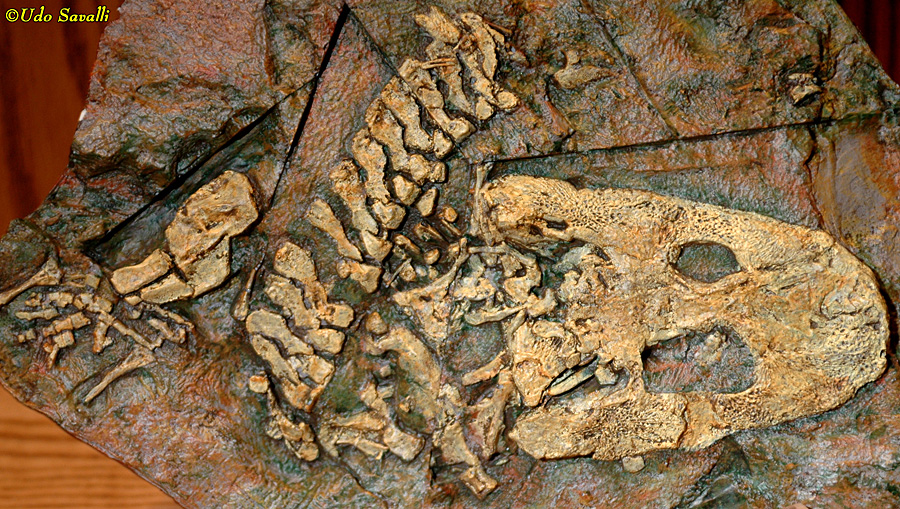
|
|
|
Life model of Acanthostega gunnari.
Late Devonian, 365 Ma; Greenland
Wyoming Dinosaur Center
|
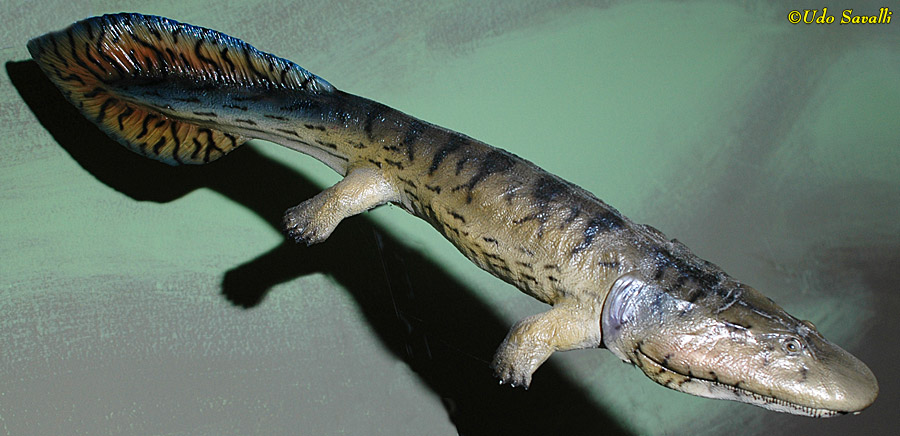
|
|
|
Life model of Ichthyostega sp., a basal tetrapod with a more robust skeleton that allowed it to move about on land.
Late Devonian, 374-359 Ma; Greenland
Wyoming Dinosaur Center
|
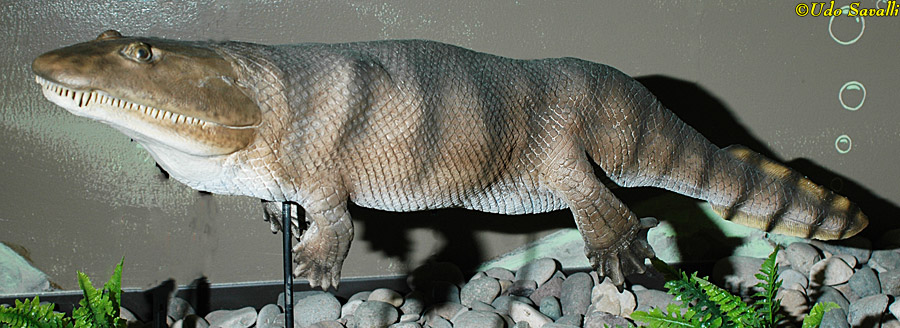
|
|
|
Life model of Greererpeton burkemorani, a basal tetrapod, that became secondarily more aquatic.
Early Carboniferous Period, 330 Ma; North America
Wyoming Dinosaur Center
|
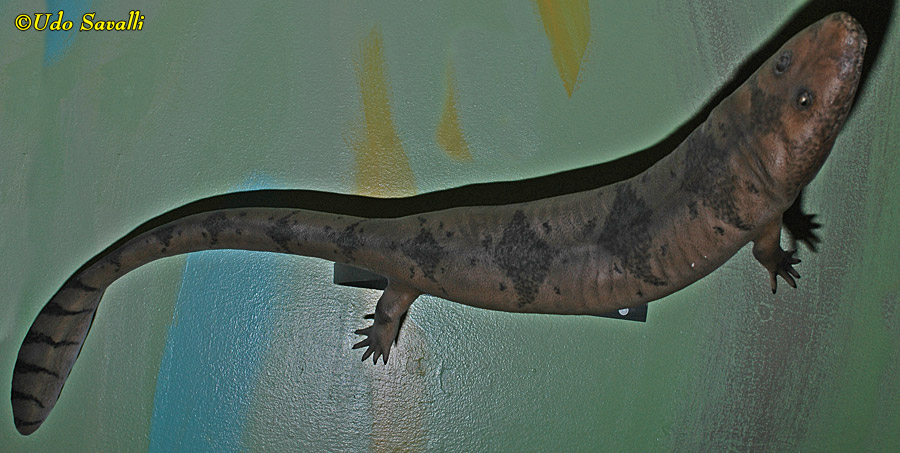
|
|
Temnospondyls
|
The temnospondyls were the largest, most diverse group of amphibians (early tetrapods). While some, such as this Koskinonodon perfecta, were semi-aquatic, others were more fully terrestrial or even fully aquatic.
Southwestern USA
late Triassic Period, 225 Ma
Arizona Museum of Natural History
|
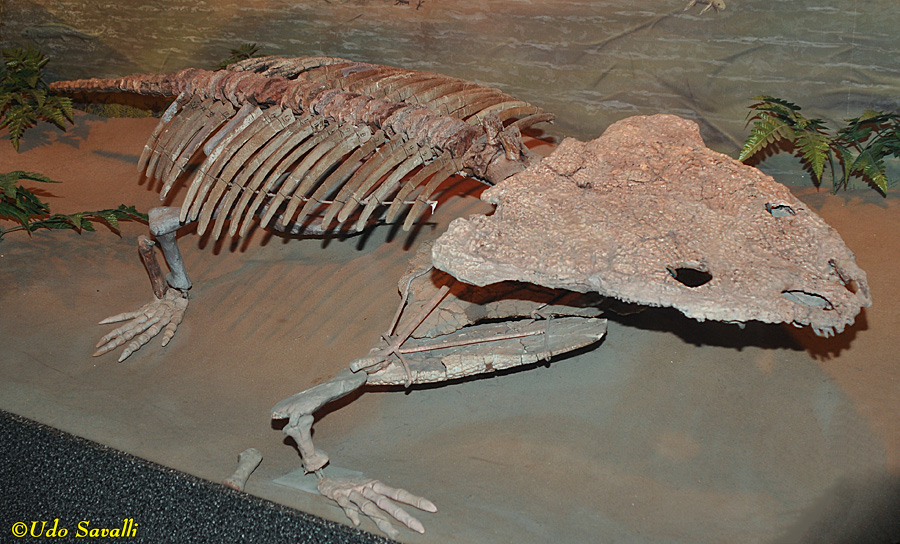
|
|
|
Eryops megacephalus reconstructed skeleton.
North America
late Carboniferous-early Permian Periods, 310-295 Ma
Museum of Ancient Life, Utah
|

|
|
|
The lack of preserved carpal and tarsal bones and gaps between other limb bones in this Sclerocephalus haeuseri indicate that the bones had not fully ossified (turned to bone) and were still partly cartilagenous. This is common among semi-aquatic animals that do not need to support their weight out of water. This specimen is preserved upside down.
Germany
Early Permian Period, 280 Ma
Wyoming Dinosaur Center
|
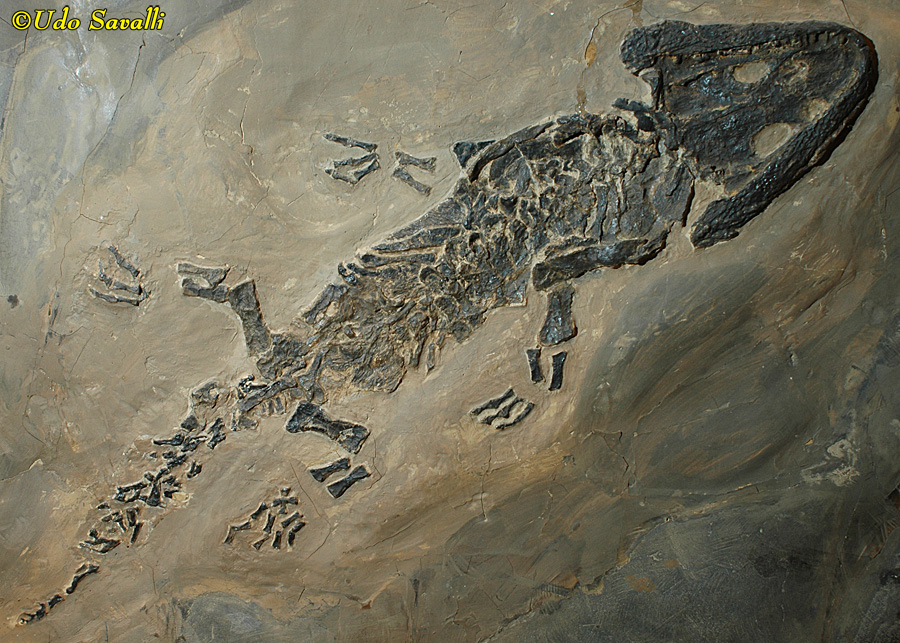
|
|
|
Micromelerpeton sp., including some carbonization outlining the body soft tissue.
Germany
Early Permian Period, 295 Ma
Wyoming Dinosaur Center
|
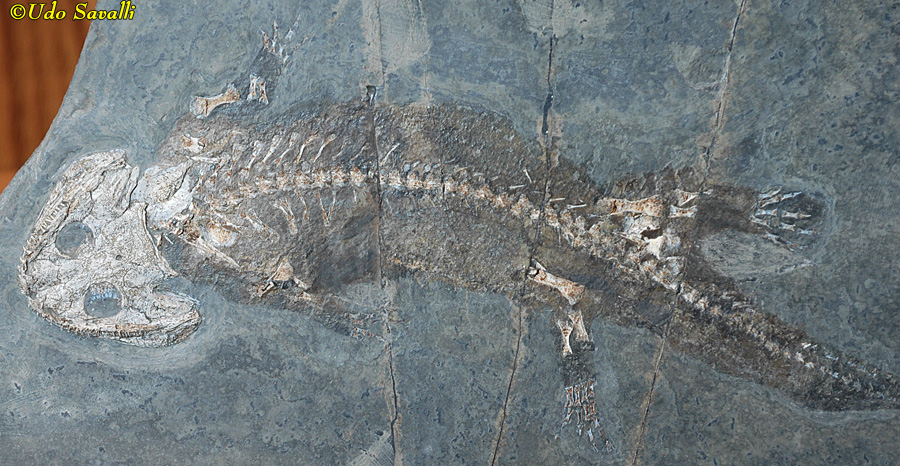
|
|
|
Branchiosaurus sp. may the larval (juvenile) form of a larger amphibian.
Germany
Permian Period
Black Hills Institute Museum, South Dakota
|
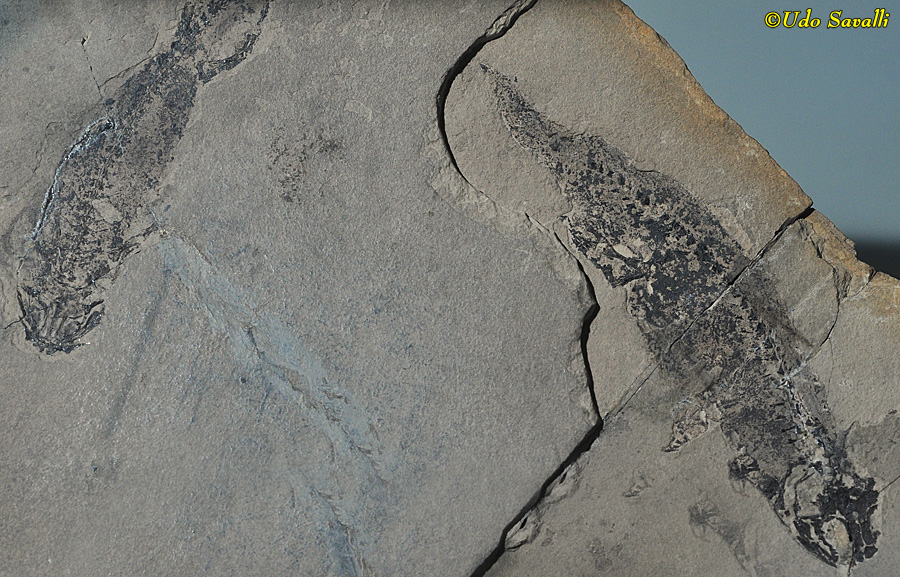
|
|
|
Saurerpeton obtusum cast.
Linton Formation, Jefferson Co., OH
Carboniferous Period, Middle Pennsylvanian Epoch, 305 Ma
Denver Museum of Science & Nature
|
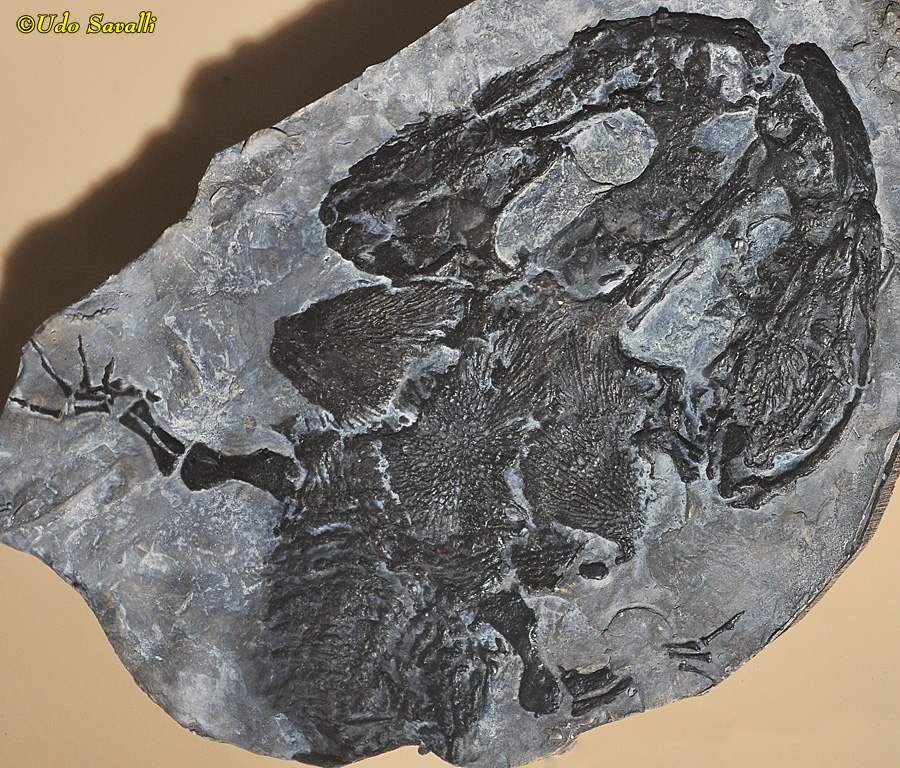
|
|
|
Some temnospondyls, such as this Aphaneramma sp. (cast of skull), became large crocodile-like predators.
Moenkopi Formation, Arizona
Triassic Period
Arizona Museum of Natural History
|
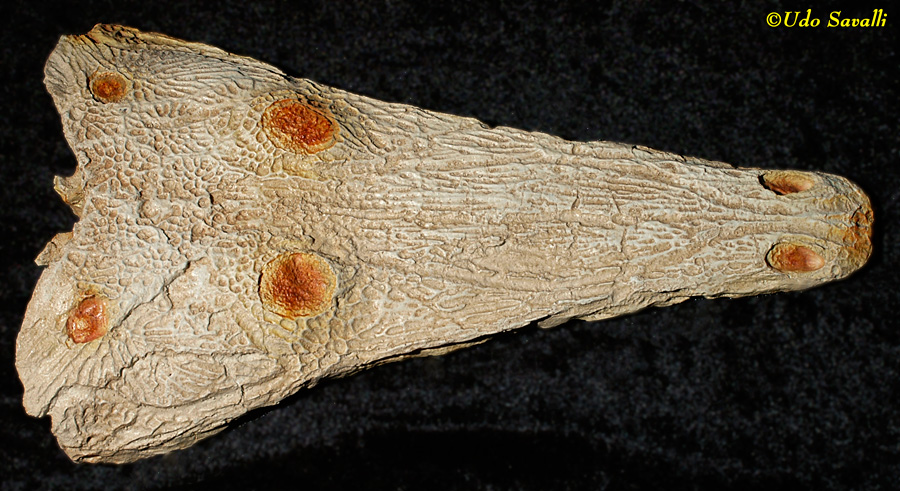
|
|
|
Cosgriffius campi (cast of skull) is closely related to Aphaneramma (above).
Moenkopi Formation, Arizona
Triassic Period
Arizona Museum of Natural History
|

|
|
|
Eocyclotosaurus sp. skull cast.
Moenkopi Formation, Arizona
Late Triassic Period
New Mexico Museum of Natural History & Science
|
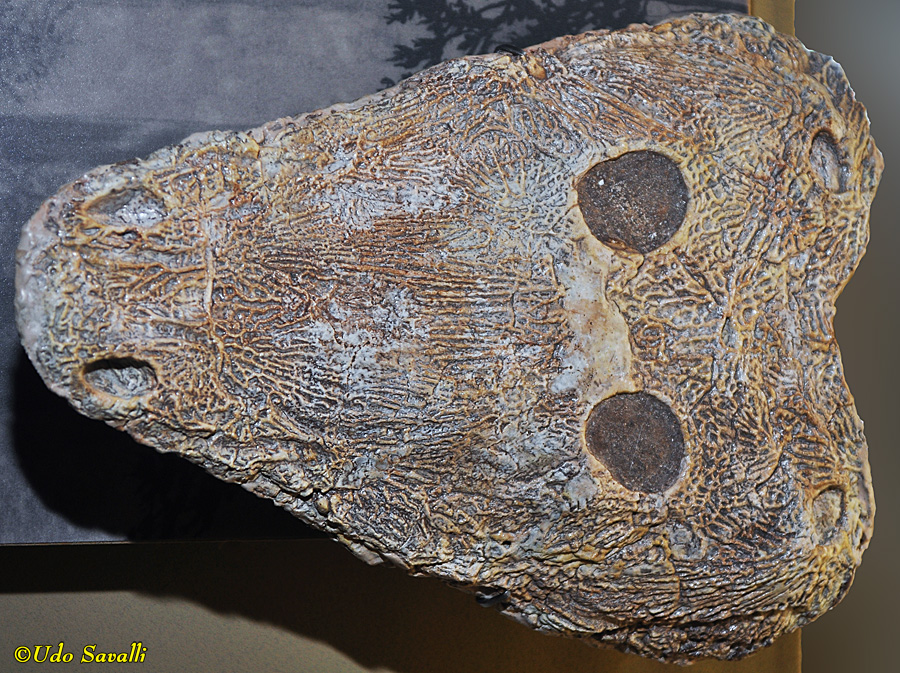
|
|
|
Metoposaurus howardensis skull.
Texas
late Triassic Period
Los Angeles Museum of Natural History
|
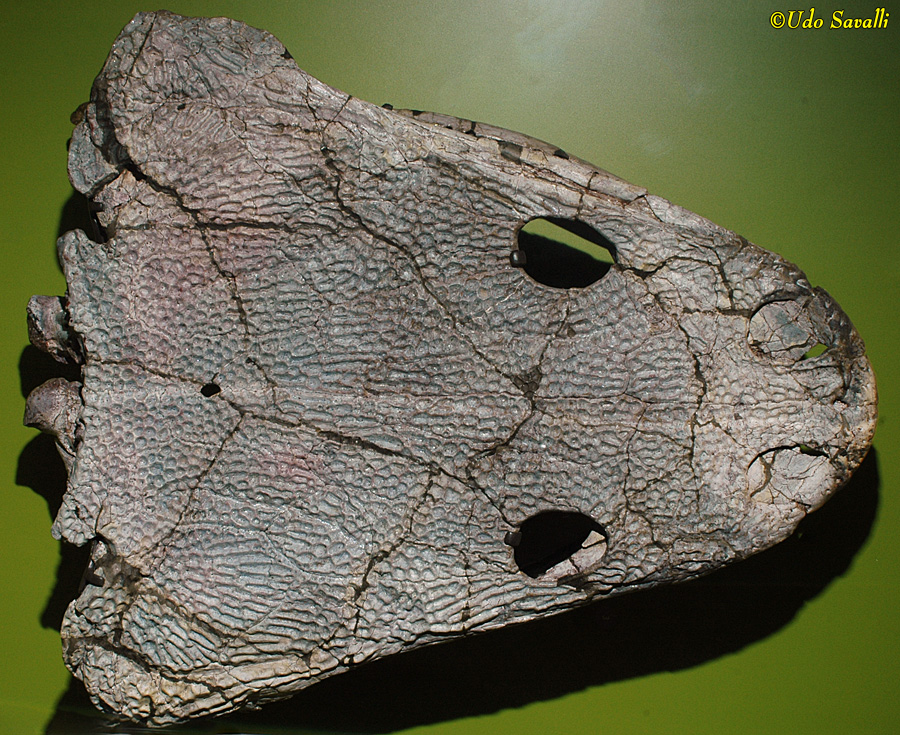
|
|
|
Hadrokkosaurus bradyi skull cast.
Moenkopi Formation, Arizona
Middle Triassic Period
Arizona Museum of Natural History
|
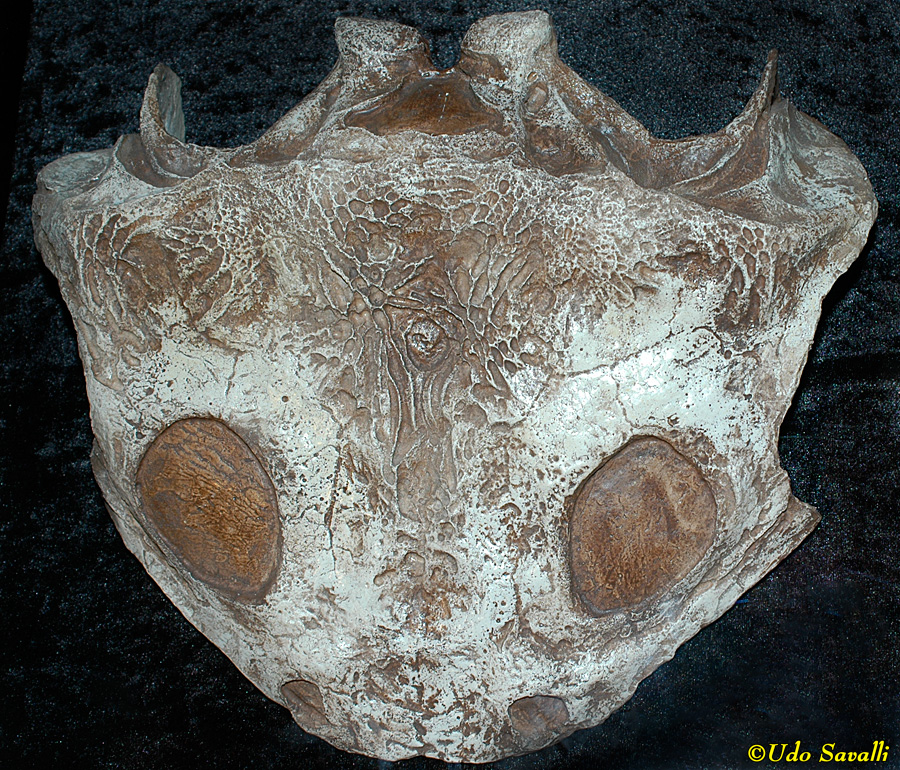
|
|
|
Paracyclotosaurus davidi skull cast.
NSW, Australia
Middle Triassic Period, 235 Ma
Dinosaur Resource Center, Colorado
|
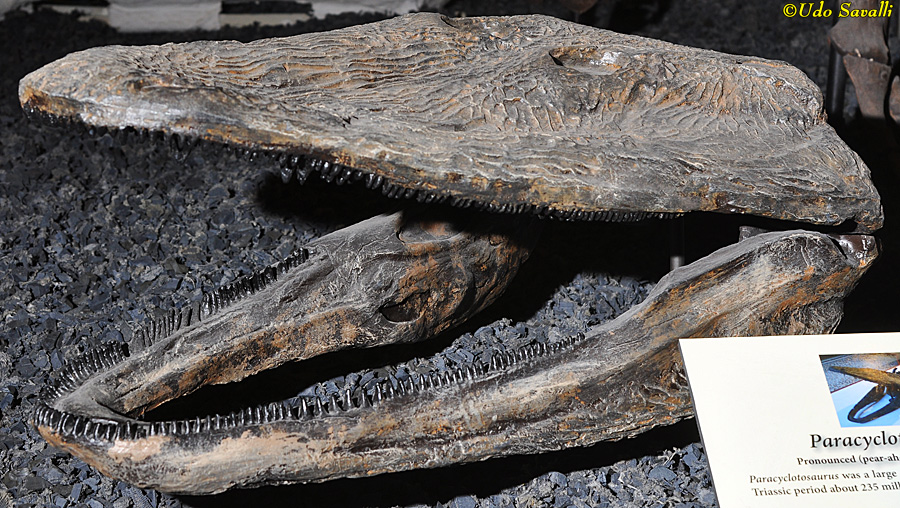
|
|
Lepospondyls
|
The lepospondyls are less diverse and less well known than the temnospondyls. They were mostly smaller sized, and some scientists question whether this is a natural group.
The boomerang-headed Diplocaulus sp. (skeleton and life model shown) is one of the largest of the lepospondyls, about 1 m long. The function of its unusual head shape is not clear, but may have acted as a hydrofoil to regulate water flow over its head, protected external gills, or provided some predator protection by making it difficult to be swallowed.
Vale Formation, Baylor Co., TX
Early Permian Period, 275 Ma
Denver Museum of Science & Nature
|
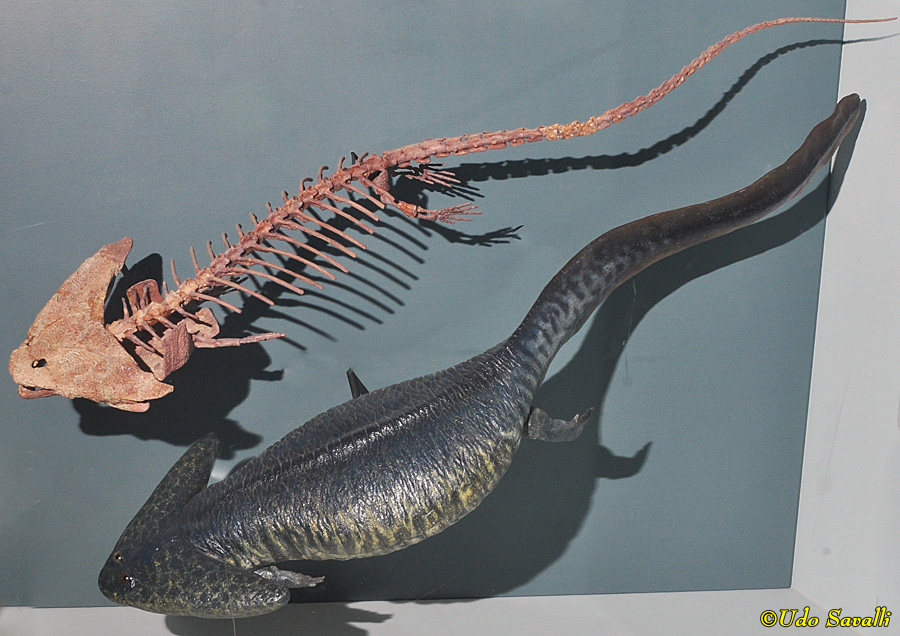
|
|
|
Life model of Diploceraspis sp., a smaller relative of Diplocaulus. Note also a giant dragonfly, roaches and a spider.
Permian Period, 270 Ma
Museum of the Rockies, Montana
|
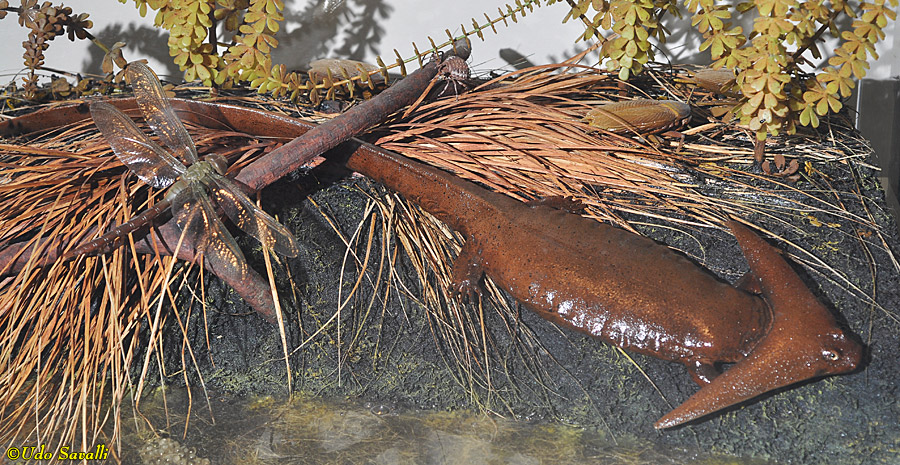
|
|
|
Life model of Ophiderpeton sp., a secondarily limbless, snake-like amphibian.
Carboniferous Period, Pennsylvanian Epoch; Europe, North America
Museum of Ancient Life, Utah
|
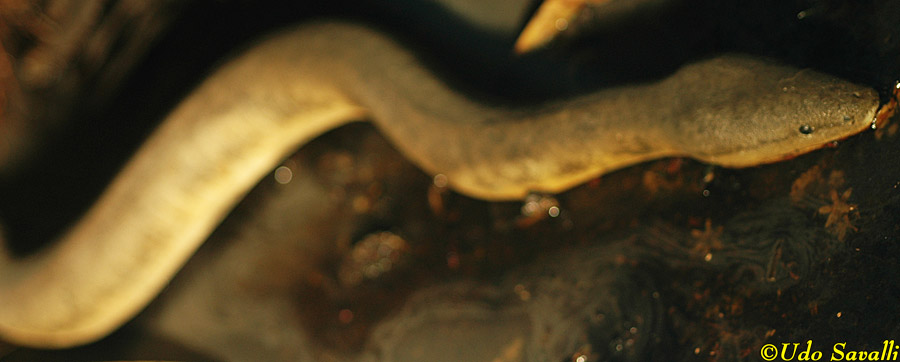
|
|
Lissamphibians
|
The term Lissamphibia is used to represent the group that includes all surviving amphibians (frogs, salamanders, and caecilians). Unfortunately, there is still considerable debate about where the Lissamphibia fit among the other extinct amphibian groups.
This frog is Eopelobates sp.
Green River Formation, Wyoming
Eocene Epoch
Black Hills Institute Museum, South Dakota
|
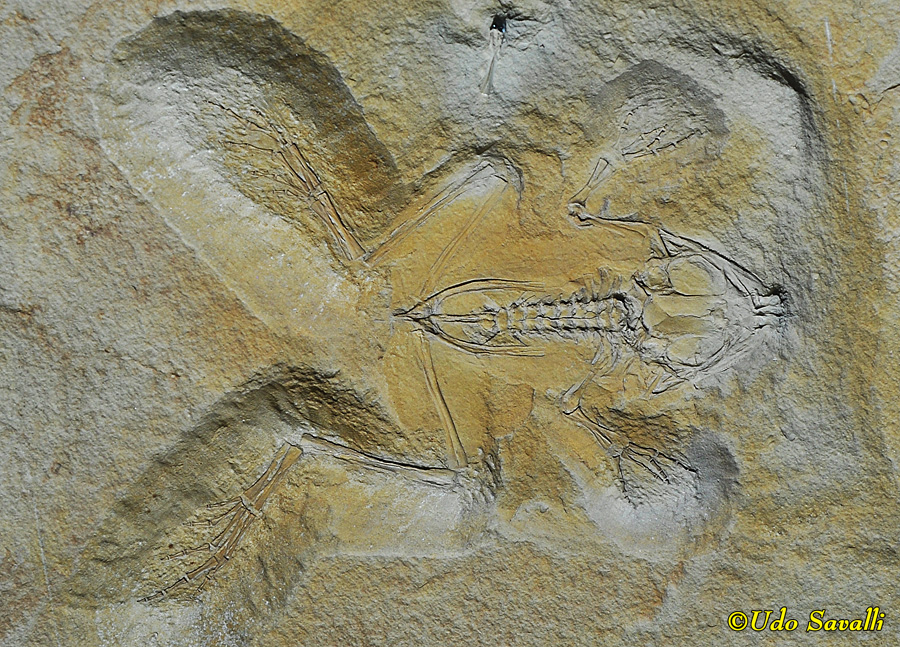
|
|
Reptiliomorpha
|
Reptiliomorphs are those tetrapods that are closest to the amniotes (tetrapods that lay amniotic eggs on land, including reptiles and mammals.
Cast of Seymouria baylorensis.
Texas
Early Permian Period, 280-270 Ma
New Mexico Museum of Natural History & Science
|
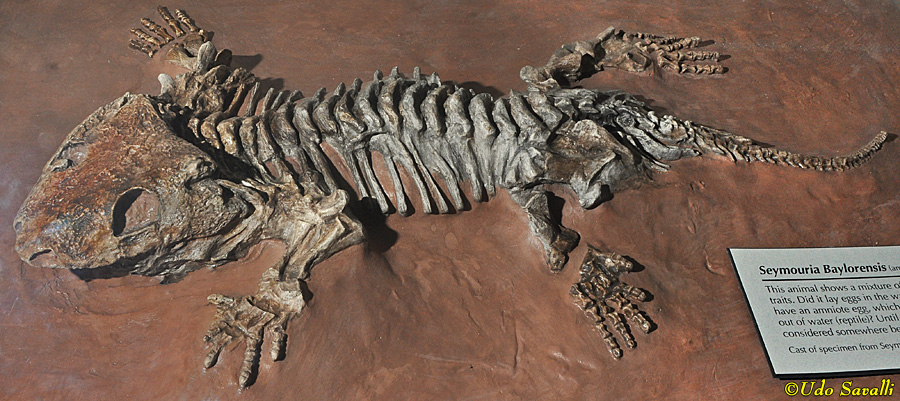
|
|
|
Seymouria sp. mass death assemblage (cast).
Cutler Formation, Arriba Co., NM
Early Permian Period, 275 Ma
Denver Museum of Science & Nature
|
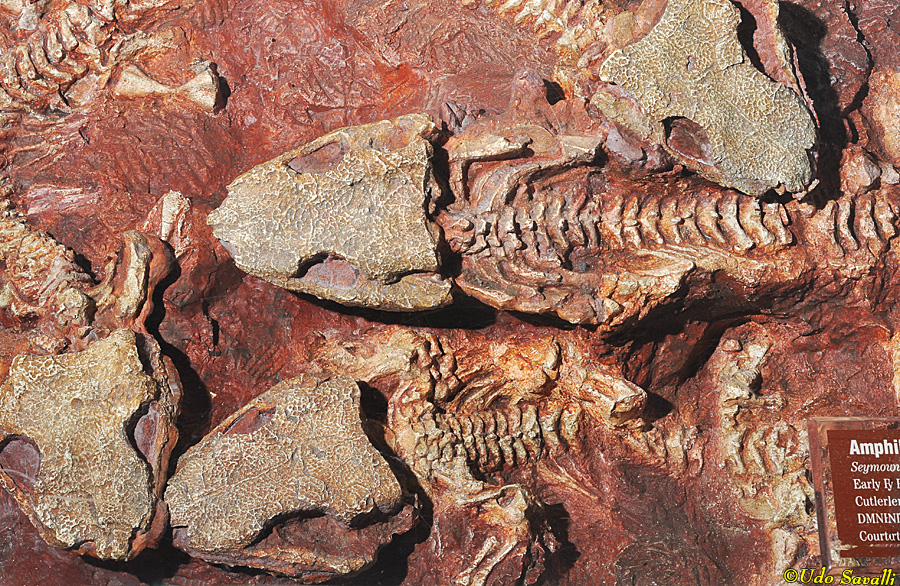
|
|
|
Discosauriscus austriacus.
Russia
Late Permian Period
Black Hills Institute Museum, South Dakota
|

|
|
|






















